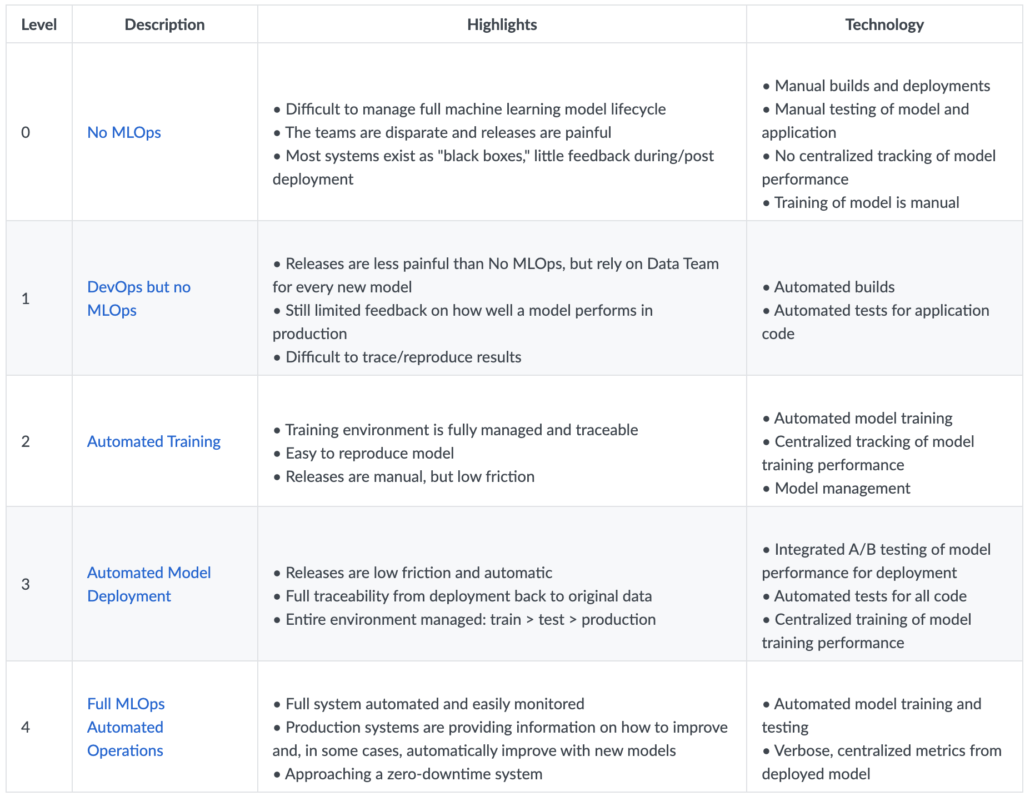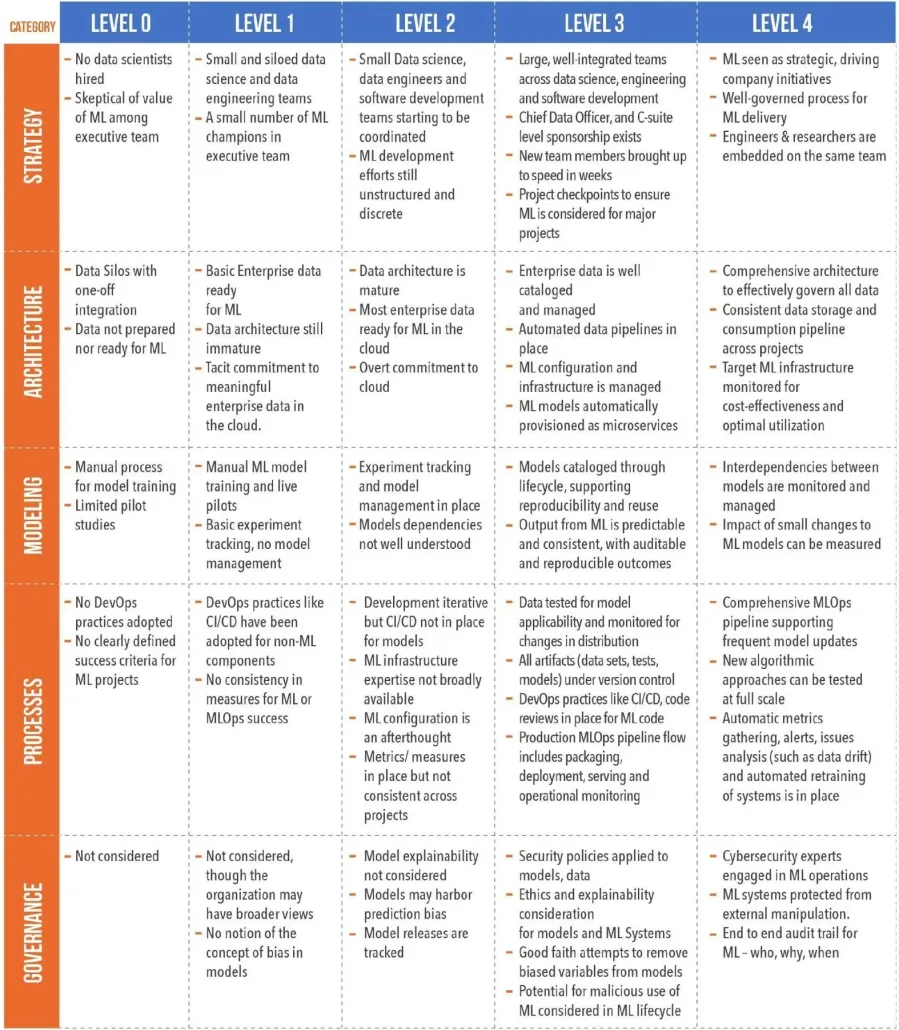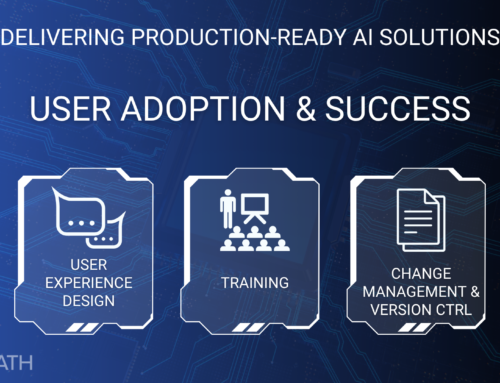The MLOps maturity lifecycle is typically divided into several levels.
In the simplest model, there are three levels of maturity:
- L1 – No automation
- L2 – Partial automation
- L3 – Full automation
In this model, "automation" refers to the deployment of the ML model itself.
Microsoft uses a slightly different and expanded maturity model:

In Microsoft's model, there are now 5 levels, and consideration is given to more than just the model itself.
Similarly, GigaOm has developed another maturity model that also breaks down the maturity lifecycle in 5 levels, but now recognizes different "categories" within the ML deployment environment.

While these maturity models demonstrate an increased awareness of the complexity of deploying an ML model into production, and while the GigaOm model attempts to break this maturity into different categories, there's still an important part missing.
Every enterprise-ready machine learning deployment is different, because every enterprise environment is different. It is impossible to express one maturity level over the entire machine learning system. And, while it helps to break the system into different categories, this will probably not be enough for an enterprise-ready deployment.
Instead, since an enterprise-ready MLOps (eMLOps) system is a complicated integration of layers, each layer much be assigned its own maturity level and maturity lifecycle.
In fact, it's entirely possible and likely that the organization may want some of the layers to stay at an "immature" level while they also wish for other layers to be more automated.
One MLOps maturity model will not fit all Enterprise-Ready MLOps (eMLOps) solutions. Instead, in order to productionize and operationalize an ML model into an enterprise environment, the maturity level and lifecycle of each layer must be taken into consideration.





